Are you curious about What Is A Textile and its role in our daily lives? At WHAT.EDU.VN, we unravel the world of textiles, exploring their composition, applications, and significance, offering you insights into fabric materials. Dive in to discover how textiles are made from various fibers, both natural and synthetic, shaping everything from clothing to home furnishings. Uncover the characteristics of textiles, fabric production, and fiber types.
1. What Is A Textile? Unveiling The Definition
A textile is a versatile material made of interlacing fibers, including yarn and thread. Initially, the term textile referred to woven fabrics; the word textile comes from the Latin word “textilis,” which means “woven.” Now, the term encompasses various materials and structures beyond weaving, such as knitting, felting, and bonding. Textiles are ubiquitous, playing a significant role in clothing, home furnishings, and various industrial applications.
2. What Are The Primary Uses Of Textiles In Everyday Life?
Textiles have a multifaceted role in our daily routines, spanning multiple industries and applications. Here’s how textiles are integral to our lives:
- Apparel: The most apparent use is in clothing, ranging from everyday wear to high-fashion garments. Textiles provide comfort, style, and protection.
- Home Furnishings: Textiles are essential for interior design. You can find them in upholstery, curtains, carpets, bedding, and towels, enhancing the aesthetic and comfort of living spaces.
- Industrial Applications: Beyond personal use, textiles play a crucial role in industries such as automotive (seat covers, airbags), agriculture (crop covers), and construction (geotextiles).
- Medical Textiles: The healthcare sector uses textiles for bandages, surgical gowns, and implants, emphasizing hygiene, protection, and patient care.
- Protective Clothing: Fire-resistant suits, bulletproof vests, and high-visibility clothing highlight textiles’ protective capabilities, ensuring safety in hazardous environments.
3. What Are The Different Types Of Textile Fibers?
Textile fibers are the basic building blocks of fabrics, and they can be broadly classified into natural and synthetic fibers. Each type has unique properties that make it suitable for different applications.
3.1. Natural Fibers
Natural fibers come from plants and animals. These fibers are known for their comfort, breathability, and eco-friendliness.
3.1.1. Cotton
Cotton is one of the most widely used natural fibers due to its softness, strength, and versatility.
- Source: Cotton fibers come from the seedpod of the cotton plant.
- Characteristics: Soft, absorbent, breathable, and relatively strong.
- Uses: Clothing (t-shirts, jeans), bedding, towels, and home textiles.
3.1.2. Linen
Linen is derived from the flax plant and is valued for its strength and coolness.
- Source: Flax plant fibers.
- Characteristics: Strong, durable, absorbent, and naturally moth-resistant.
- Uses: Clothing (suits, dresses), bedding, tablecloths, and upholstery.
3.1.3. Wool
Wool comes from sheep and other animals. It’s known for its warmth and resilience.
- Source: Fleece of sheep and other animals (e.g., goat, alpaca).
- Characteristics: Warm, resilient, absorbent, and naturally flame-resistant.
- Uses: Sweaters, coats, blankets, carpets, and upholstery.
3.1.4. Silk
Silk is a luxurious fiber produced by silkworms, prized for its smoothness and luster.
- Source: Silkworm cocoons.
- Characteristics: Smooth, lustrous, strong, and absorbent.
- Uses: Dresses, scarves, ties, lingerie, and bedding.
3.1.5. Ramie
Ramie is a bast fiber derived from the inner bark of the ramie plant, native to Eastern Asia.
- Source: Inner bark of the ramie plant’s stem.
- Characteristics: One of the strongest natural fibers.
- Uses: Clothing, home furnishings, and automotive upholstery.
3.1.6. Hemp
Hemp fibers are known for their strength and durability, making them suitable for various applications.
- Source: Hemp plant.
- Characteristics: Strong and durable.
- Uses: Rope, paper, fabric, sails for ships (historically), clothing, and bags.
3.1.7. Coir
Coir fibers come from the husk of coconuts and are valued for their strength and resistance to mold and mildew.
- Source: Husk of the coconut.
- Characteristics: Strong, durable, and resistant to mold and mildew.
- Uses: Brushes, mats, ropes, and upholstery.
3.2. Synthetic Fibers
Synthetic fibers are man-made fibers created through chemical processes. They are often stronger and more durable than natural fibers, and can be engineered for specific properties.
3.2.1. Polyester
Polyester is a widely used synthetic fiber known for its strength, durability, and resistance to wrinkles and shrinking.
- Source: Petroleum-derived polymers.
- Characteristics: Strong, durable, wrinkle-resistant, and hydrophobic (water-resistant).
- Uses: Clothing, upholstery, curtains, and industrial textiles.
3.2.2. Nylon
Nylon is a strong, elastic, and durable synthetic fiber often used in apparel and industrial applications.
- Source: Polyamide polymers.
- Characteristics: Strong, elastic, abrasion-resistant, and quick-drying.
- Uses: Clothing (stockings, swimwear), carpets, ropes, and tires.
3.2.3. Acrylic
Acrylic is a synthetic fiber that mimics the look and feel of wool.
- Source: Polyacrylonitrile polymers.
- Characteristics: Soft, warm, lightweight, and resistant to sunlight and moths.
- Uses: Sweaters, blankets, carpets, and synthetic fur.
3.2.4. Rayon
Rayon is a semi-synthetic fiber made from regenerated cellulose.
- Source: Regenerated cellulose from wood pulp or cotton linters.
- Characteristics: Soft, absorbent, breathable, and drapes well.
- Uses: Clothing, upholstery, and medical textiles.
3.2.5. Polypropylene
Polypropylene fibers are made from the byproducts of oil and natural gas production.
- Source: Polymerized propylene resin.
- Characteristics: Creates long thin synthetic fibers.
- Uses: Upholstery fabric, active wear, medical fabrics, and industrial geotextiles.
4. What Are The Key Properties That Define A Textile?
The properties of a textile determine its suitability for specific uses. These properties can be influenced by the type of fiber, the construction method (weaving, knitting, etc.), and any finishes applied to the fabric.
- Durability: The ability of a textile to withstand wear and tear. Strong fibers like nylon and polyester enhance durability.
- Absorbency: The capacity of a textile to absorb moisture. Cotton and linen are highly absorbent.
- Elasticity: The ability of a textile to return to its original shape after being stretched. Spandex and nylon provide good elasticity.
- Breathability: The extent to which a textile allows air to pass through it. Natural fibers like cotton and linen are generally more breathable.
- Wrinkle Resistance: The ability of a textile to resist wrinkling. Polyester and treated cotton fabrics have good wrinkle resistance.
- Texture: The surface feel of a textile, which can range from smooth to rough.
- Thermal Properties: How well a textile insulates or conducts heat. Wool is known for its excellent insulation properties.
5. How Are Textiles Made? Exploring The Manufacturing Process
The manufacturing of textiles involves several key steps, from fiber production to fabric finishing.
5.1. Fiber Production
Whether natural or synthetic, the first step is to obtain or create the fibers.
- Natural Fibers: Natural fibers are harvested from their sources. For example, cotton is picked from cotton plants, wool is sheared from sheep, and silk is unwound from silkworm cocoons.
- Synthetic Fibers: Synthetic fibers are produced through chemical processes. Polymers are created and then extruded through spinnerets to form continuous filaments.
5.2. Yarn Formation
The fibers are then spun into yarn, which is a continuous strand of fibers.
- Spinning: Fibers are twisted together to create yarn. Different spinning methods (e.g., ring spinning, open-end spinning) can affect the yarn’s strength and texture.
5.3. Fabric Construction
Yarn is used to construct fabric through various methods.
- Weaving: Interlacing two sets of yarns (warp and weft) at right angles to create a woven fabric.
- Knitting: Interlocking loops of yarn to create a knitted fabric, which is more elastic and flexible than woven fabrics.
- Felting: Matting fibers together using heat, moisture, and pressure to create a non-woven fabric.
- Bonding: Adhering fibers together using adhesives or heat to create a non-woven fabric.
5.4. Dyeing and Printing
The fabric is then dyed or printed to add color and patterns.
- Dyeing: Immersing the fabric in a dye bath to uniformly color the material.
- Printing: Applying color to specific areas of the fabric to create patterns or designs.
5.5. Finishing
The final step involves applying various finishes to enhance the fabric’s properties.
- Chemical Finishes: Treatments to improve wrinkle resistance, water repellency, or flame resistance.
- Mechanical Finishes: Processes like calendaring (pressing) to smooth the fabric or raising to create a napped surface.
6. What Is The Environmental Impact Of Textile Production?
Textile production can have significant environmental impacts, including water pollution, energy consumption, and waste generation.
- Water Pollution: Dyeing and finishing processes often release harmful chemicals into waterways.
- Energy Consumption: The production of synthetic fibers and the operation of textile mills require substantial energy inputs.
- Waste Generation: Textile waste from manufacturing scraps and discarded clothing contributes to landfill overflow.
Sustainable practices are becoming increasingly important in the textile industry to mitigate these impacts.
- Organic Fibers: Using organically grown cotton, linen, and other natural fibers reduces the use of harmful pesticides and fertilizers.
- Recycled Fibers: Recycling materials like plastic bottles into polyester fibers reduces waste and conserves resources.
- Water Conservation: Implementing water-efficient dyeing and finishing processes can significantly reduce water consumption and pollution.
- Eco-Friendly Dyes: Using natural or low-impact dyes minimizes the release of harmful chemicals into the environment.
7. How Do I Care For Different Types Of Textiles To Prolong Their Life?
Proper care can extend the life of textiles and reduce their environmental impact.
- Read the Care Label: Always follow the manufacturer’s instructions for washing, drying, and ironing.
- Wash Less Frequently: Washing clothes less often can reduce wear and tear and conserve water and energy.
- Use Cold Water: Washing in cold water saves energy and can prevent colors from fading.
- Avoid Harsh Chemicals: Use mild detergents and avoid bleach, which can damage fibers.
- Air Dry When Possible: Air drying is gentler on fabrics and saves energy compared to machine drying.
- Store Properly: Store textiles in a cool, dry place away from direct sunlight to prevent fading and damage.
8. What Are Some Common Textile Industry Innovations?
The textile industry is continually evolving, with innovations focused on improving performance, sustainability, and functionality.
- Smart Textiles: Fabrics integrated with electronic components that can monitor vital signs, change color, or provide heating.
- Performance Fabrics: Textiles engineered for specific performance characteristics, such as moisture-wicking, UV protection, and antimicrobial properties.
- Sustainable Materials: Development of new eco-friendly fibers and production processes to reduce environmental impact.
- 3D-Printed Textiles: Creating textiles directly from digital designs using 3D printing technology.
- Nanotechnology: Applying nanoscale materials to textiles to enhance properties such as stain resistance, water repellency, and antimicrobial activity.
9. What Is The Role Of Textiles In Fashion And Design?
Textiles are foundational to fashion and design, influencing trends, aesthetics, and functionality.
- Fashion Trends: Textile innovations drive fashion trends, with new fabrics and finishes inspiring designers to create innovative garments.
- Aesthetic Appeal: The color, texture, and drape of textiles significantly impact the visual appeal of clothing and home furnishings.
- Functionality: Textiles determine the comfort, performance, and practicality of clothing and other textile products.
- Cultural Significance: Textiles often carry cultural and historical significance, reflecting traditions and values through patterns, techniques, and materials.
10. Frequently Asked Questions (FAQs) About Textiles
| Question | Answer |
|---|---|
| What is the difference between a fabric and a textile? | A textile is any material made of interlacing fibers, including yarn and thread. Fabric is a type of textile created through weaving, knitting, or other methods. Thus, all fabrics are textiles, but not all textiles are fabrics. |
| What are the most common natural fibers? | The most common natural fibers include cotton, linen, wool, and silk. Cotton is widely used for its softness and versatility, linen for its strength and coolness, wool for its warmth, and silk for its smoothness and luster. |
| What are the advantages of synthetic fibers over natural fibers? | Synthetic fibers often offer greater durability, wrinkle resistance, and water resistance compared to natural fibers. They can also be engineered for specific performance characteristics, such as moisture-wicking and UV protection. |
| How can I identify the fiber content of a fabric? | Look for a care label on the garment or textile product. The label typically lists the fiber content, along with instructions for care. If the label is missing, you can perform a burn test, but this requires caution and experience. |
| What is sustainable textile production? | Sustainable textile production involves practices that minimize environmental impact, such as using organic fibers, recycling materials, conserving water, and employing eco-friendly dyes. It also includes ethical labor practices and reducing waste. |
| How can I reduce my environmental impact when caring for textiles? | Wash clothes less frequently, use cold water, avoid harsh chemicals like bleach, air dry when possible, and recycle or donate unwanted textiles to reduce waste. |
| What are smart textiles? | Smart textiles are fabrics integrated with electronic components that can perform functions such as monitoring vital signs, changing color, or providing heating. They are used in various applications, including healthcare, sports, and fashion. |
| What is the difference between woven and knitted fabrics? | Woven fabrics are created by interlacing two sets of yarns at right angles, resulting in a stable and structured material. Knitted fabrics are made by interlocking loops of yarn, creating a more elastic and flexible material. |
| What are performance fabrics? | Performance fabrics are textiles engineered for specific performance characteristics, such as moisture-wicking, UV protection, antimicrobial properties, and stain resistance. They are commonly used in sportswear, outdoor gear, and healthcare textiles. |
| How do finishes improve the properties of textiles? | Finishes are treatments applied to fabrics to enhance their properties. Chemical finishes can improve wrinkle resistance, water repellency, and flame resistance. Mechanical finishes, such as calendaring and raising, can alter the texture and appearance of the fabric. |
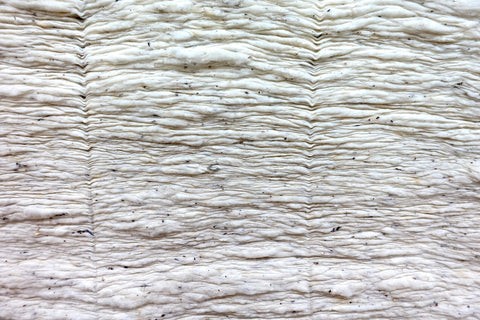
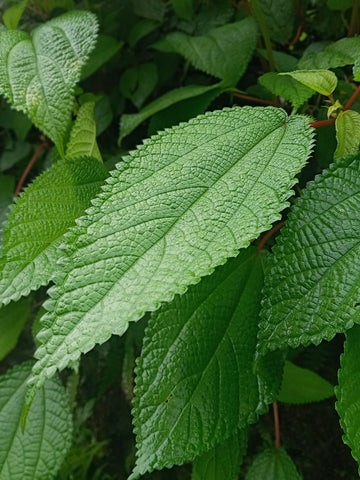
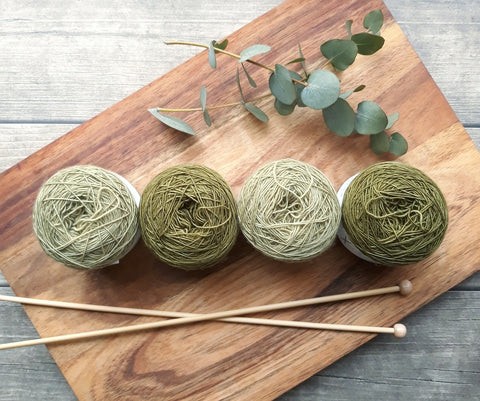
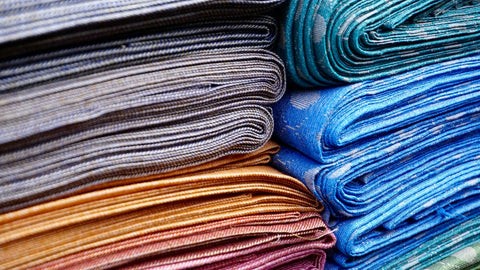
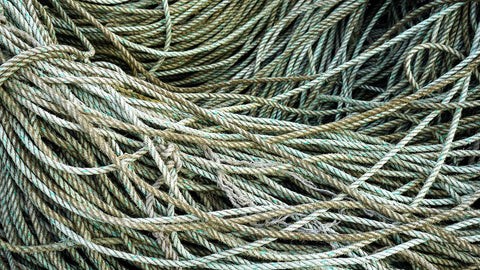
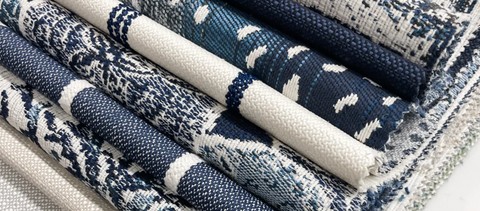
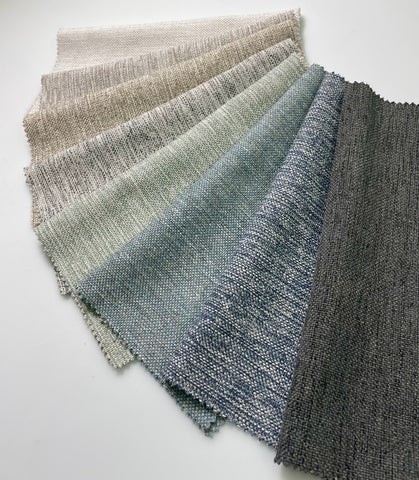
Conclusion
Textiles are an integral part of our daily lives, providing comfort, style, and functionality in various applications. Understanding what is a textile, its types, properties, and production processes can help you make informed choices about the textiles you use and how to care for them. As the textile industry continues to evolve, innovations in sustainability and technology promise to shape a more responsible and functional future for textiles.
Do you have more questions about textiles or any other topic? Don’t hesitate to ask on WHAT.EDU.VN, where you can get free answers to all your questions. Our community of experts is ready to help you explore any subject you’re curious about. Contact us at 888 Question City Plaza, Seattle, WA 98101, United States, or reach out via WhatsApp at +1 (206) 555-7890. Visit our website what.edu.vn today and start asking.
